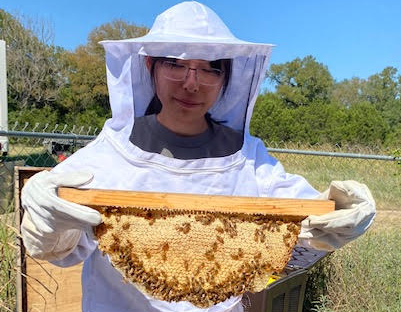The question of whether or not it is healthy for adolescents to consume coffee and other forms of caffeine has been debated for decades. On one hand, excessive coffee consumption in minors has been proven to harm sleep patterns, cause anxiety, increase heart rate and blood pressure, and cause dehydration. On the other hand, coffee has been proven to increase productivity and alertness, as well as have long-term positive health effects. Regardless of whether or not it is more of a benefit or a detriment to young people, there is no denying the widespread consumption of coffee. In a 2023 U.S. survey published by The National Institute of Health, 35% of respondents under the age of 18 said they consumed coffee at least once a month. How does this stat compare to St. Stephen’s students? What demographic of St. Stephen’s students drink the most coffee? Why do they drink coffee? A survey was sent out to the St. Stephen’s upper school to get to the bottom of these questions. This is what we know about coffee on the hill.
Out of the 78 responses we received, 42% of students said they drink coffee often (with 19% drinking coffee every day and 23% drinking coffee a few times a week), 12% said they drink coffee once a week, 12% drink coffee once a month, and 35% said they never drink coffee. 65% of St. Stephen’s students reported consuming coffee at least once a month as opposed to the 35% that reported drinking it once a month in the nationwide survey previously mentioned. This number is surprisingly high, begging the question, why does St. Stephen’s drink so much coffee?
When students were asked if anything about the St. Stephen’s environment led to a difference in their coffee consumption, 57% said that they drank more coffee as a result of this environment, 10% said they drank less, and 33% said it had no effect. Among those who said it had caused them to drink more coffee, the most common factor students pointed to was the high workload at St. Stephen’s. A few students discussed how they felt that this workload contributed to lower levels of sleep, which led them to drink more coffee to compensate for an energy deficiency. A student suggests that, because of the workload at St. Stephen’s, it is a “high stress environment” where people “need ways to help them stay engaged and awake.” Another factor students pointed to was the accessibility of coffee at St. Stephen’s. Because the coffee machines have a range of coffee flavors and varieties that appeal to many students, as well as the proximity of these machines to students, since they are placed in the dining hall, some students have pointed to them as a reason St. Stephen’s students seem to drink more coffee than other high school students in the country.
A key split between the coffee and non-coffee drinkers was dictated by grade. 44% of freshmen, 68% of sophomores, 62% of juniors, and 78% of seniors said they drank coffee at least once a month (with a significantly higher percentage of freshmen saying they only drank it once a month as opposed to other grades). This data suggests that those in a higher grade are more likely than those in lower grades to drink more coffee (with the exception of the sophomores and juniors, which have similar rates of coffee drinkers, with sophomores having 6% more than juniors). This fits with the trend nationally of average coffee intake increasing as age increases, which is attributed to a variety of factors such as higher stress levels in older people, more familiarity with coffee options, and easier access to coffee.
St. Stephen’s provides a unique schooling experience that can differ drastically from the experience of an average American high schooler who attends a public school. These differences inevitably result in a difference of habit among St. Stephen’s students, and coffee consumption is a prime example of one of these habits. Although a single form sent out to the upper school could never accurately tell the full story of coffee at St. Stephen’s, the survey provides an interesting look into the coffee habits that seem to have become increasingly normalized on the hill.




























